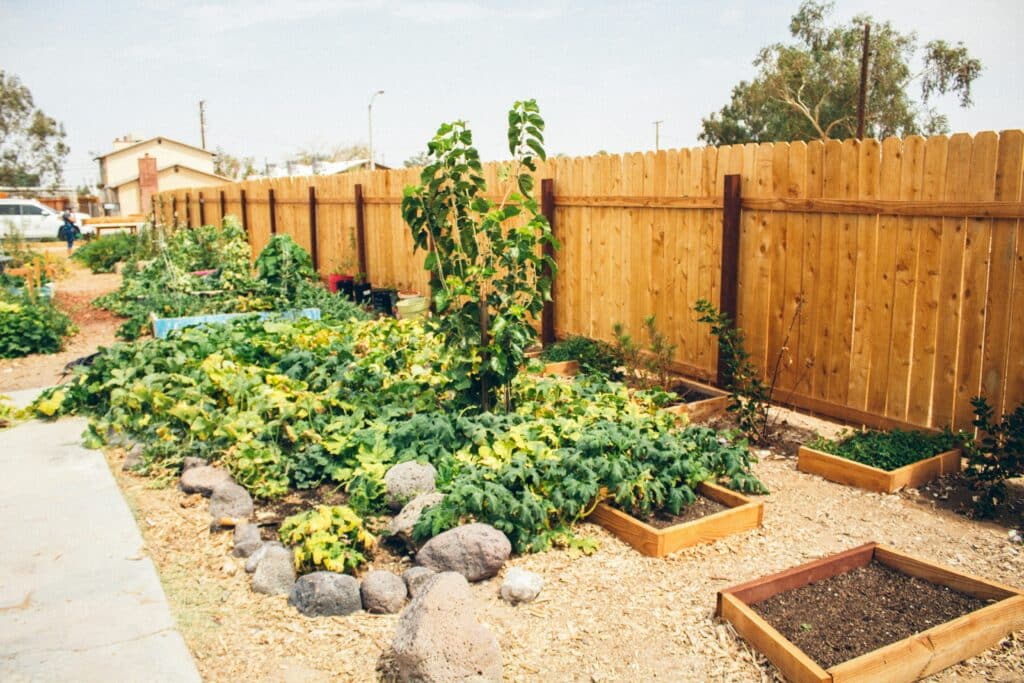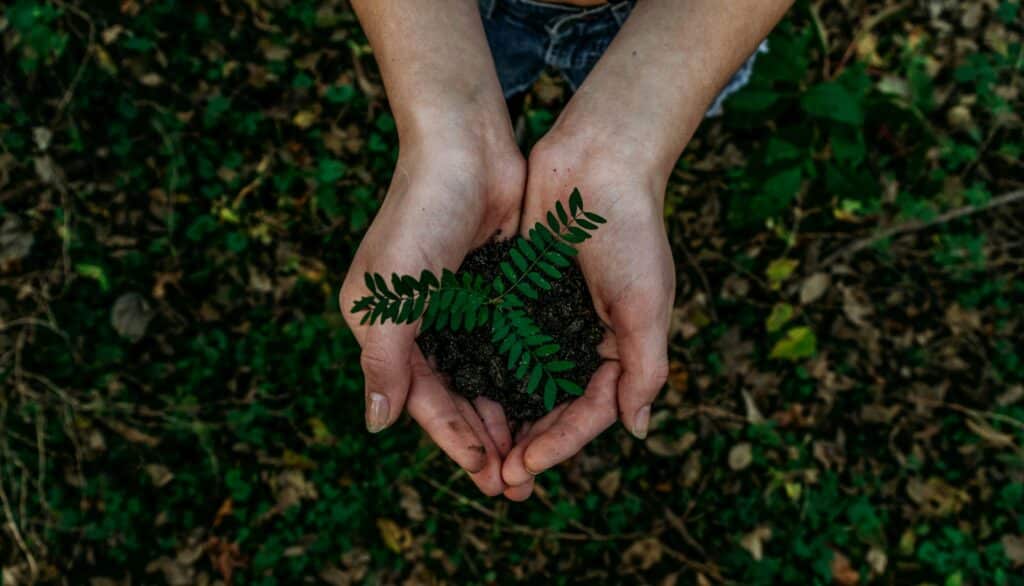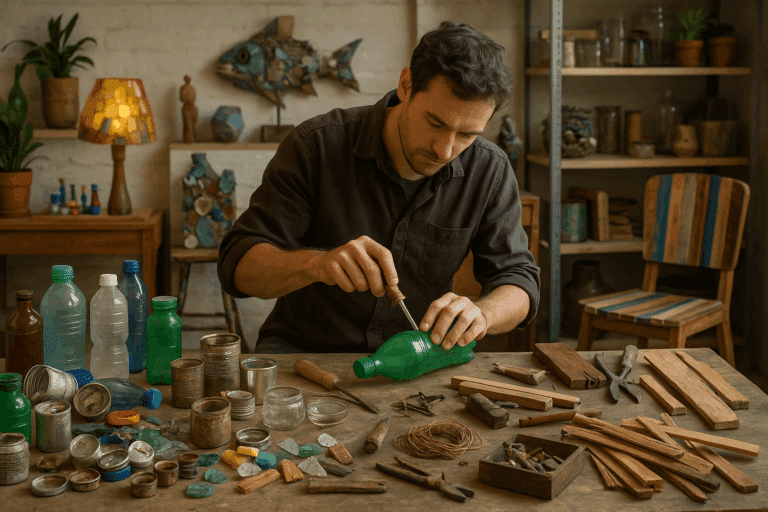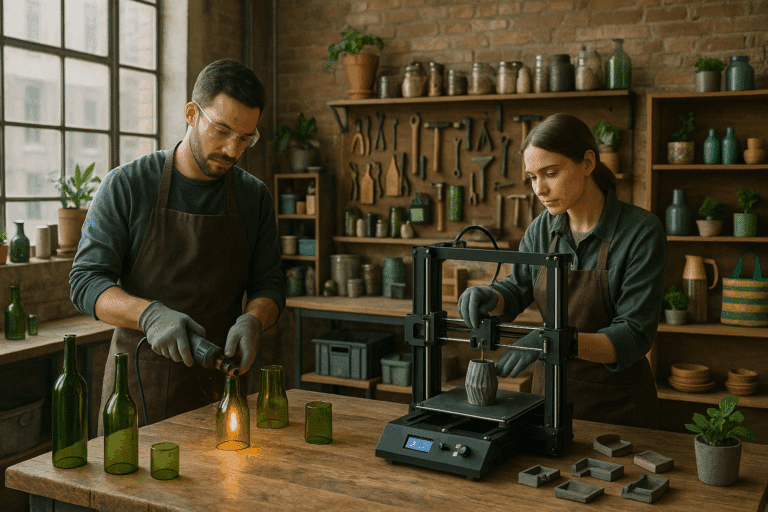Given the increasing environmental challenges, finding sustainable ways to pursue our passions has become more important than ever. For gardening enthusiasts, creating a green space that not only enhances their home’s beauty but also contributes to the environment is a pressing concern. Our upcoming discussion will focus on an innovative idea, ‘Transforming Plastic Jugs into Eco-Friendly Greenhouses,’ that combines recycling and gardening in a compelling, sustainable way.

The abundance of discarded plastic jugs, if used wisely, can be transformed into an eco-friendly solution rather than contributing to the growing global pollution problem. Imagine utilizing these otherwise waste materials and turning them into a resource for your own garden. This is not just a fantasy, but a reality that we will delve into in this discussion.
This discussion aims to offer step-by-step guidance on how you can reuse plastic jugs to build your own small, sustainable greenhouse. The plastic jug greenhouses serve multiple purposes; they provide a warm, controlled environment for seeds to germinate and young plants to grow, all while reusing waste material in a beneficial way. In addition to making your garden more sustainable, this project can also save you some money.
While this project is exciting, it requires careful planning and execution. This discussion will guide you through the entire process. From choosing the right jugs, preparing them for the greenhouse, deciding the ideal plants for your miniature greenhouse, to tips for maintaining them for the best results – we will cover it all.
This innovative gardening approach will not only result in a greener, more beautiful space but also a more sustainable lifestyle. By the end of this, we hope you’ll be inspired to embrace this project and make a significant difference to the environment, one plastic jug at a time. Stay tuned to learn about this unique method of combining recycling and gardening in the most eco-friendly way. So, let’s embark on this sustainable gardening journey together!
Understanding the Greenhouse Effect
Mini greenhouses created from plastic jugs not only embody sustainable principles but also provide functional advantages that benefit both novice and experienced gardeners. These compact structures are particularly useful in regions with unpredictable weather, where young seedlings or delicate plants can struggle to survive in open-air conditions. The snug, humid environment inside the jug helps to maintain consistent temperatures and moisture levels, which is critical during germination and early growth stages.
Moreover, plastic jug greenhouses are highly versatile. They can be used for a wide range of gardening purposes—starting seeds, growing herbs, sheltering small vegetables, or even nurturing ornamental plants. Their portability means you can easily move them to follow sunlight or protect them from extreme weather, giving your plants the best possible conditions.
Another key benefit is that these mini greenhouses help reduce reliance on synthetic gardening tools and systems. Instead of buying plastic seedling trays or costly heat mats, gardeners can simply repurpose what they already have. This not only saves money but also reduces the demand for manufacturing new plastic products—one more win for the environment.
From an educational perspective, these DIY greenhouses are also excellent tools for teaching children or students about plant biology, sustainability, and environmental responsibility. Watching a seed sprout and grow inside a clear jug provides a visual and tactile experience that fosters curiosity and respect for nature.
In essence, turning everyday waste into useful gardening tools reflects the core values of sustainable living: creativity, responsibility, and resilience. By adopting this practice, gardeners take a small but meaningful step toward greener lifestyles. Whether you’re cultivating tomatoes on your balcony or growing herbs on your kitchen windowsill, plastic jug greenhouses offer a simple yet powerful method to grow smartly, sustainably, and successfully.
Benefits of Mini Greenhouses
Before we delve into the process of creating mini greenhouses from plastic jugs, let’s take a moment to appreciate the benefits that they offer.
- Sustainability: By recycling plastic jugs, you’re reducing your carbon footprint and contributing to waste reduction.
- Cost-Effective: Creating mini greenhouses from household waste is an inexpensive way to promote plant growth.
- Plant Protection: These greenhouses offer a controlled environment, protecting plants from harsh weather conditions, pests, and diseases.
- Extended Growing Season: Greenhouses create a warmer climate, enabling year-round gardening, irrespective of the season.
Transforming Plastic Jugs into Mini Greenhouses
Now that we understand the benefits of mini greenhouses, let’s discuss how to create them using plastic jugs. This DIY project is not only cost-effective but also an excellent way to repurpose everyday household items. Plastic jugs, especially 1-gallon milk or water containers, are ideal because they are lightweight, transparent, and easy to modify. These makeshift greenhouses help trap heat and moisture, simulating the perfect environment for seed germination and early plant growth. By transforming plastic jugs into mini greenhouses, you’re taking a step toward sustainable gardening, reducing plastic waste, and creating an accessible way to grow plants in any season—even during colder months or in limited spaces. It’s an ideal solution for apartment dwellers, students, or beginner gardeners who want to experiment with plant propagation without investing in expensive equipment. Whether you’re starting herbs, vegetables, or flowers, these portable and functional greenhouses offer just the right balance of simplicity and efficiency to get your garden going.

Materials Needed
To build your own mini greenhouses using plastic jugs, you’ll need the following items:
- Empty plastic jugs (1-gallon milk or water jugs work best)
- Scissors or a utility knife (sharp enough to cut through plastic)
- Clear tape or duct tape (preferably waterproof for outdoor use)
- Permanent marker (for labeling)
- Drill with a small bit (optional, for making ventilation holes)
- Potting soil (choose one suitable for the plants you’re growing)
- Seeds or seedlings (vegetables, herbs, or flowers of your choice)
- Spray bottle (for gentle watering)
Step-by-Step Guide
Step-by-Step Guide
1. Clean the Jugs
Begin by washing the jugs thoroughly with warm, soapy water. Rinse out any milk residue or impurities, as leftover organic matter can harbor mold or bacteria that might harm your seedlings. Let the jugs air dry completely.
2. Cut the Jug
Using scissors or a utility knife, carefully cut around the jug horizontally, about 3 to 4 inches from the bottom. Leave a small section uncut to act as a hinge if you want the top to open and close easily. The lower part will serve as the base where soil and seeds will go.
3. Add Ventilation
Use a drill or heat a metal skewer to make a few small holes in the top portion of the jug. This will allow heat and moisture to escape, preventing mold buildup and overheating on sunny days. You can also add drainage holes to the base if using outdoors.
4. Fill with Soil and Plant
Add potting soil to the bottom portion of the jug, filling it about halfway. Moisten the soil slightly before planting your seeds or inserting seedlings according to their depth and spacing instructions. Gently press the seeds into the soil and mist lightly.
5. Reattach the Top
Carefully close the top portion back over the base, aligning the cut edges. Seal it with clear tape to keep the mini greenhouse intact and protect it from wind or cold air drafts. This creates a humid, warm microclimate ideal for germination.
6. Label Clearly
Use a permanent marker to label the jug with the plant variety and the planting date. This helps you track growth progress and identify what’s inside without opening every container.
Placement Tips
Put your mini greenhouses in a sunny spot, such as a windowsill, balcony, or patio. Monitor them daily for condensation levels, soil moisture, and signs of sprouting. Once seedlings grow strong enough, you can begin hardening them off by opening the tops during the day.
These recycled greenhouses are a sustainable, cost-effective way to start a garden—even in winter.
Maintaining Your Mini Greenhouses
Maintaining your mini greenhouses is straightforward. You can open the tops to water the plants as needed, and if the weather gets too hot, you can remove the tops completely to prevent overheating.
Keep an eye on the moisture levels inside the jugs. While it’s essential to keep the soil moist, overwatering can cause problems. Too much moisture can lead to mold growth, which can harm your plants. If this occurs, open the tops to let the excess moisture evaporate.
Additionally, ventilation is key to keeping your seedlings healthy. On warmer days, prop open the tops during daylight hours to allow for air circulation, then close them again in the evening to preserve warmth. Regularly check the interior walls of the jug for condensation—some moisture is good, but persistent fogginess can be a sign that the airflow is insufficient.
As your seedlings grow larger, it’s also important to rotate or shift the greenhouses slightly each day to ensure even exposure to sunlight. This prevents the plants from leaning in one direction and encourages strong, balanced growth.
Once the seedlings are strong enough and the outside temperatures are consistently warm, begin the process of hardening them off by gradually removing the tops during the day. This will prepare them for transplanting into your outdoor garden or larger containers.
Remember, the goal of using mini greenhouses is to create a controlled environment that allows your plants to thrive. Keep an eye on the health of your plants and adjust your care routine as necessary.
The Garden finals
Sustainable gardening is all about making the most of what you have and reducing waste. With mini greenhouses made from plastic jugs, you can create the ideal growing conditions for your plants while recycling materials that might otherwise end up in a landfill. It’s a win-win situation for you and the environment. With some simple steps and regular maintenance, you can grow a thriving garden all year round. Happy gardening!
In addition to being environmentally friendly, plastic jug greenhouses are also cost-effective and incredibly easy to personalize. Whether you’re a seasoned gardener or a curious beginner, this approach offers a low-risk, high-reward way to experiment with different plant varieties and growing techniques. You can use these mini greenhouses to start seedlings earlier in the season, protect delicate plants from sudden temperature drops, or extend your growing period into the colder months.
Moreover, these upcycled tools teach valuable lessons about resourcefulness and environmental stewardship—making them a great educational project for families and school settings. Each reused jug represents a step toward a more conscious and sustainable lifestyle.
So grab a few plastic containers, a pair of scissors, and your favorite seeds. With just a little effort, you’ll be cultivating a green thumb and a greener planet.
Conclusion
n conclusion, “Grow Your Garden Sustainably: Transforming Plastic Jugs into Eco-Friendly Greenhouses” presents a practical and innovative solution for sustainable gardening. This eco-friendly approach not only reduces plastic waste but also contributes to creating a greener environment. By turning plastic jugs into miniature greenhouses, we can give a second life to plastic materials, therefore playing our part in reducing landfill pollution. This initiative isn’t just beneficial for the environment; it’s also a cost-effective method for gardeners, providing a practical way to protect plants in varying weather conditions.
Through this sustainable practice, we can foster a culture of recycling and green living, which is pivotal in today’s climate crisis. The article reinforces the importance of individual contributions to environmental sustainability and proves that every little bit helps. With easy-to-follow steps, it encourages even novice gardeners to join in on this green initiative.
Beyond the environmental benefits, these mini greenhouses also offer educational value, making them a great hands-on project for schools, families, and community gardens. They serve as a visual reminder of how simple changes can yield meaningful impact. Whether you’re growing herbs on a windowsill or starting seedlings for a backyard garden, these homemade greenhouses offer flexibility, functionality, and purpose.
In essence, this approach intertwines gardening and sustainability, offering a win-win solution for garden enthusiasts and Mother Earth alike. Let’s take a leaf out of this article and sow the seeds of sustainability in our gardens today, proving that going green doesn’t have to be complicated or expensive. Indeed, it’s as simple as reusing a plastic jug! 🌱💚🌍



